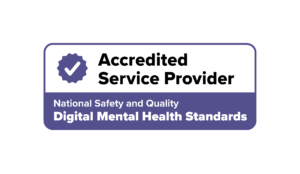Medications for ADHD: how do they work?
For people with ADHD, medications can help the cells in their brain (called neurons) communicate with each other more effectively. This can help people with ADHD to control what they pay attention to and to experience a reduction in ADHD symptoms while on medication.
Cells in your brain called neurons communicate with each other using chemical messengers called neurotransmitters. People with ADHD might have lower levels of some of these neurotransmitters, and most medications for ADHD are helpful for bringing those neurotransmitters back up to the levels that you need them to be at. They help you to concentrate and think without as many ADHD symptoms.
What are stimulants?
Your psychiatrist might recommend a stimulant as a treatment for your ADHD. Stimulants are a broad class of drugs that usually increase (or stimulate) activity in the brain and body.
One of the things that stimulant medications do is increase the levels of a chemical messenger in your brain called dopamine. You might have heard of dopamine as a pleasure chemical, but it’s not just about that – you need normal levels of dopamine in order to think and concentrate properly.
Having healthy amounts of dopamine helps you use your cognitive skills to control your behaviour (this kind of conscious control over your behaviour is called “executive functioning”).
For people who don’t have ADHD, if they took stimulants, they would probably become more active (people can sometimes even become manic or agitated on stimulants). But when people with ADHD take stimulants, this should help to correct their dopamine levels – bringing the levels up closer to the levels that people without ADHD have.
The main stimulant medications are called methylphenidate, dexamfetamine, and lisdexamfetamine. The thing they all have in common is that they help your brain cells communicate with each other better.
Understanding how stimulants help people with ADHD: some analogies
(These analogies suggested by our psychiatrists might help make sense of the role of medications, we realise they won’t apply for everyone!)
Analogy #1: Taking stimulants can feel like repositioning your laptop right next to a good wifi router (instead of being in a room that’s far away from the router, where the signal keeps dropping out for no apparent reason). [1]
Without medication…
…ADHD can feel like trying to keep your laptop connected to a wifi network from a router that’s so many rooms away that the signal keeps dropping out. You have to move to various different parts of the room before you find a good enough signal to connect. And even then, the signal might drop out at random times and force you to go looking for another spot.
With medication…
…Taking stimulants can feel like repositioning your laptop so that it’s right next to (or even directly connected to) a great wifi router.
Analogy #2: Taking stimulants can feel like riding a bike with fully-inflated wheels, instead of them being partly-deflated. [1]
Without medication…
…ADHD can feel like trying to ride a bike that has flat tyres. You have to peddle harder (and move a lot more) to make the progress you want to make, and you still might not get there. Taking stimulants can feel like having your tyres inflated a bit more.
With medication…
…You don’t have to peddle as hard to get to your destination (but you still have to peddle!)
Alternatives to stimulants
If a stimulant medication is not an option for you, there are alternatives. Other common medication options include atomoxetine or guanfacine. Atomoxetine increases the levels of certain brain chemicals that help you to think and concentrate. Guanfacine also helps your neurons to communicate with each other more effectively, especially in a part of the brain (called the prefrontal cortex) that helps you to control your behaviour and what you pay attention to.
How long do ADHD medications take to work?
Different types of ADHD medications take different lengths of time to work.
Stimulant medications have immediate effects, so you should notice improvements to your symptoms the same day that you take them. There are different types of stimulant medications – short-acting and long-acting.
• Short-acting stimulants (immediate-release methylphenidate or dexamfetamine) start to work about 30 to 45 minutes after you take them and work for only a few (3-6) hours.
• Long-acting stimulants (modified-release methylphenidate or lisdexamfetamine) are designed to be taken in the morning, and they work for up to ~6-12 hours.
Non-stimulant medications take up to several weeks to work.
[1] More about the analogies
In both the analogies above, we are making references to how stimulants can make it easier for people with ADHD to achieve what they want to achieve. This is part of the reason stimulants are recommended as first-line treatment for people with ADHD, unless there are specific reasons why the person can’t or shouldn’t take them. You can read more about this in Chapter 5 of the Australian ADHD treatment guidelines.
In the wifi analogy, we are making references to how stimulants can improve your “signal” – in this case, stimulants increase the transmission of certain chemical messengers that allow signals to be passed from one brain cell to another.
Both analogies also make reference to the hyperactivity that sometimes comes with ADHD, and both scenarios involve less of a need for movement once the person is on stimulants.
Similarly, in ADHD, it seems that hyperactive symptoms might be related to people trying to compensate for their low dopamine levels. If you’d like to read a detailed paper about this theory for why people with ADHD get less hyperactive (not more hyperactive) on stimulants, here is a link to a paper that explains this theory. You don’t have to read that paper to understand the general principle of the scenarios above, though – the general idea is that some hyperactivity is thought to be compensation for lower dopamine levels (just like harder peddling partly compensates for a flat tyre, and moving your laptop around allows you to find spots with slightly better signal), and the need for that compensatory hyperactivity basically goes away when the person is on medication.


